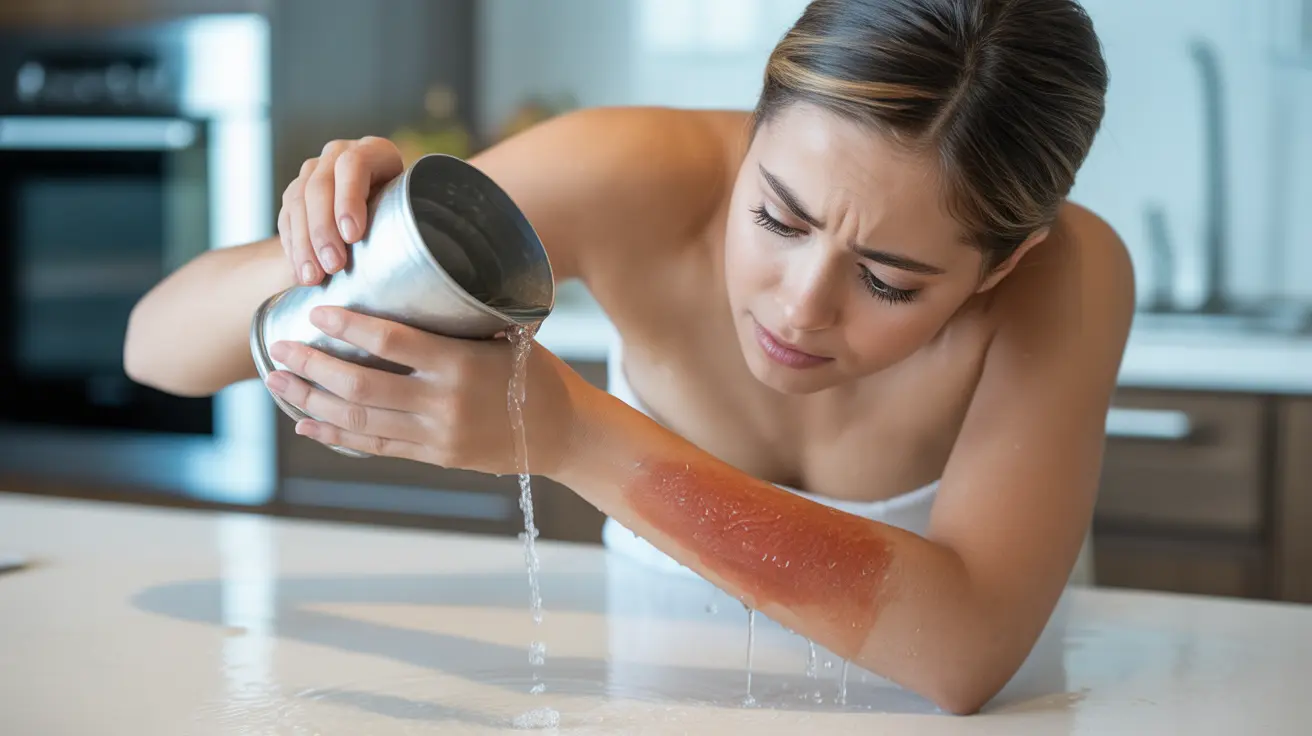A boiling water burn, also known as a scald, can be a serious and painful injury that requires immediate attention. Understanding how to properly respond to these burns and knowing when to seek medical help can make a significant difference in the healing process and prevent long-term complications. This comprehensive guide will walk you through the essential steps of burn care and prevention.
Understanding Boiling Water Burns
When boiling water comes into contact with skin, it can cause varying degrees of tissue damage depending on factors such as the temperature of the water, duration of contact, and the amount of skin exposed. These burns typically result in first or second-degree burns, though prolonged exposure can lead to more severe third-degree burns.
Immediate Steps After a Boiling Water Burn
Quick and appropriate action is crucial when dealing with a boiling water burn. The first steps you take can significantly impact the healing process:
- Remove yourself from the heat source immediately
- Remove any clothing around the burned area (unless it's stuck to the skin)
- Begin cooling the burn right away
- Protect the burned area from further injury
Proper Cooling Technique
The correct method of cooling a burn is essential for minimizing damage and managing pain:
- Run cool (not cold) water over the burn for 20 minutes
- Avoid using ice, which can cause additional tissue damage
- Keep the water pressure gentle to prevent further injury
- Maintain room temperature in the surrounding area to prevent hypothermia
Assessing Burn Severity
Being able to recognize the severity of a burn is crucial for determining whether professional medical attention is needed:
Minor Burns (First-Degree)
- Redness of the skin
- Mild swelling
- Pain
- No blistering
Moderate Burns (Second-Degree)
- Blistering
- Intense redness
- Severe pain
- Possible skin peeling
Severe Burns (Third-Degree)
- White or blackened skin
- Deep tissue damage
- Possible numbness
- Always requires emergency care
Home Care and Treatment
For minor to moderate burns that don't require immediate medical attention, proper home care is essential:
- Keep the burn clean and dry
- Apply an over-the-counter antibiotic ointment
- Cover with a sterile, non-stick bandage
- Change dressings daily
- Take over-the-counter pain medication as needed
Prevention Strategies
Preventing boiling water burns is always better than treating them. Important safety measures include:
- Keep pot handles turned inward on the stove
- Use back burners when possible
- Never carry hot liquids while holding children
- Check water temperature before entering baths
- Install anti-scald devices on faucets
Frequently Asked Questions
What are the first steps to take immediately after getting a burn from boiling water?
Immediately remove yourself from the heat source and run cool (not cold) water over the burn for 20 minutes. Remove any clothing from the burned area unless it's stuck to the skin, and avoid applying ice or any home remedies directly to the burn.
How can I tell if a boiling water burn is severe and requires emergency medical attention?
Seek immediate medical attention if the burn is larger than 3 inches, affects sensitive areas like hands or face, shows signs of third-degree burns (white or blackened skin), or if you develop fever or signs of infection. Also seek help if you see extensive blistering or experience severe pain.
What are the best home care practices to promote healing and prevent infection after a boiling water scald?
Keep the burn clean and dry, apply antibiotic ointment, cover with sterile non-stick bandages, and change dressings daily. Avoid breaking blisters, and take over-the-counter pain medication as needed for discomfort.
What common causes lead to boiling water burns in the home, and how can I prevent them?
Common causes include spilled tea or coffee, tipped cooking pots, and hot bath water. Prevent burns by using back burners when cooking, turning pot handles inward, checking water temperatures, and installing anti-scald devices on faucets.
How should I safely cool and dress a boiling water burn without causing more damage?
Cool the burn under running cool water for 20 minutes, maintaining gentle pressure. After cooling, gently pat the area dry with a clean cloth, apply antibiotic ointment if appropriate, and cover with a sterile, non-stick bandage. Avoid applying ice or very cold water, which can cause additional damage.




